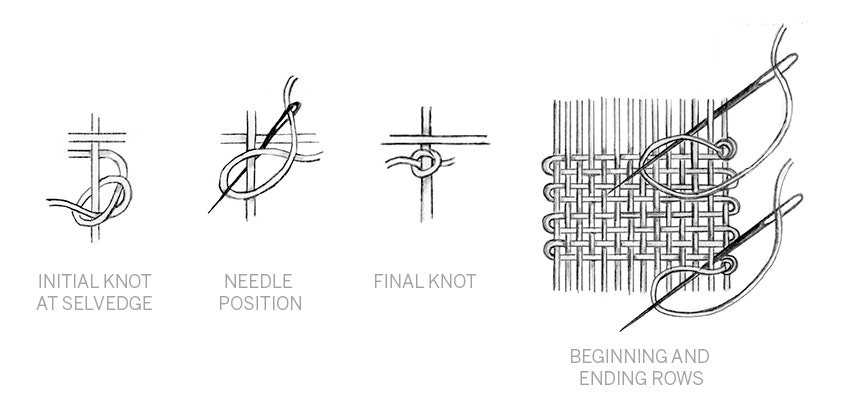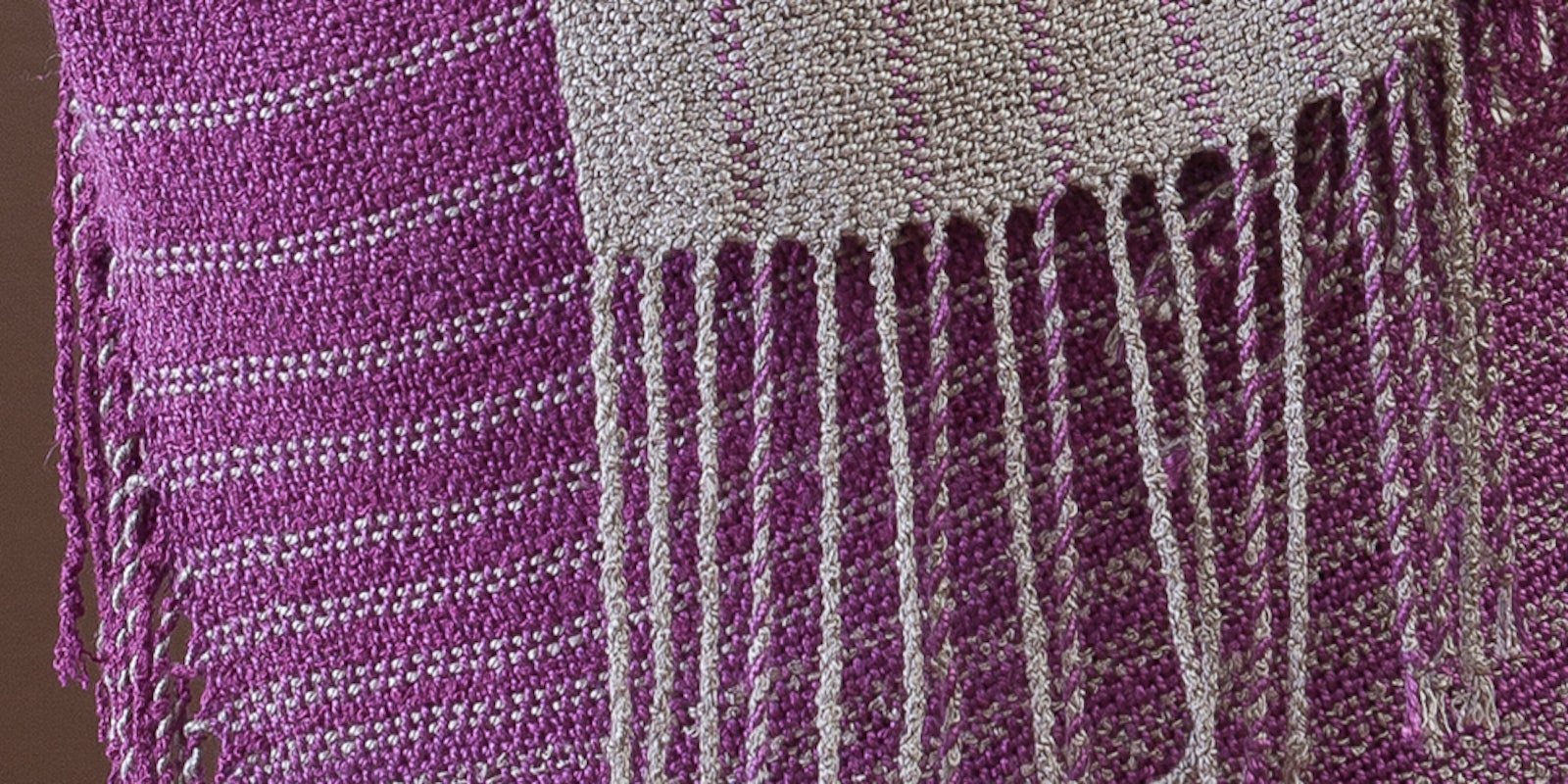We often find that hemstitching through fabric woven with textured or delicate yarns can be a challenge. In those situations, the knotting stitch is especially useful. For example, the Ombré Silk Shawl (found in our free silk ebook), shown above, used the knotting stitch because a silk bouclé warp that would have snagged if the edge was finished with regular hemstitching. Here are Nancy Arthur Hoskins’s directions for doing the knotting stitch. We suggest that you add this technique to your weaving arsenal—you’ll be glad you did!
Do you know about a secure, attractive, and versatile alternative to the traditional hemming stitch? It’s called the knotting stitch, and it’s a version of the coral knot or twisted chain embroidery stitch that’s been adapted for working on warp ends. I’ve used the knotting stitch to finish my first woven sample, my largest tapestries, my most delicate silk shawls, and my linen lace weaves.
 Nancy Arthur Hoskins secured the ends on her Lavender’s Blue shawl with a knotting stitch before twisting the fringe.
Nancy Arthur Hoskins secured the ends on her Lavender’s Blue shawl with a knotting stitch before twisting the fringe.
It’s also the stitch I used to finish my Lavender’s Blue shawl shown just above. This stitch involves tying a knot on each warp end just below or above the woven web. The instructions below describe how to knot single warp ends using your weft yarn, but you can knot groups of warp ends together, and you can knot them with a substitute yarn or even with sewing thread.
How to Make the Knotting Stitch
Begin and end your weaving with two plain weave picks. Leave a tail of the first weft pick 3X the warp width on the right side if right-handed or on the left side if left-handed. Weave an inch or two of your project to stabilize the warp.

Tie a knot around the selvedge warp end with the weft tail. (If you‘re using a substitute yarn, leave a 3" tail to stitch into the web later.)
Thread the knotting yarn on a blunt tapestry needle. Hold the needle in your working hand and the knotting yarn parallel to the weft picks with the other hand. Pass the needle under a single warp or set of warps. The end of the needle must pass over the looped portion of the knotting yarn, as shown in the diagram above.
Keep some tension on the knotting yarn, and tighten the knot by pulling the needle through the loop.
Repeat the knotting stitch for each end across the web. Stitch any tails into the web after cutting the weaving off the loom.
—Nancy Arthur Hoskins
First published December 14, 2015. Revised October 9, 2020; August 13, 2025.

